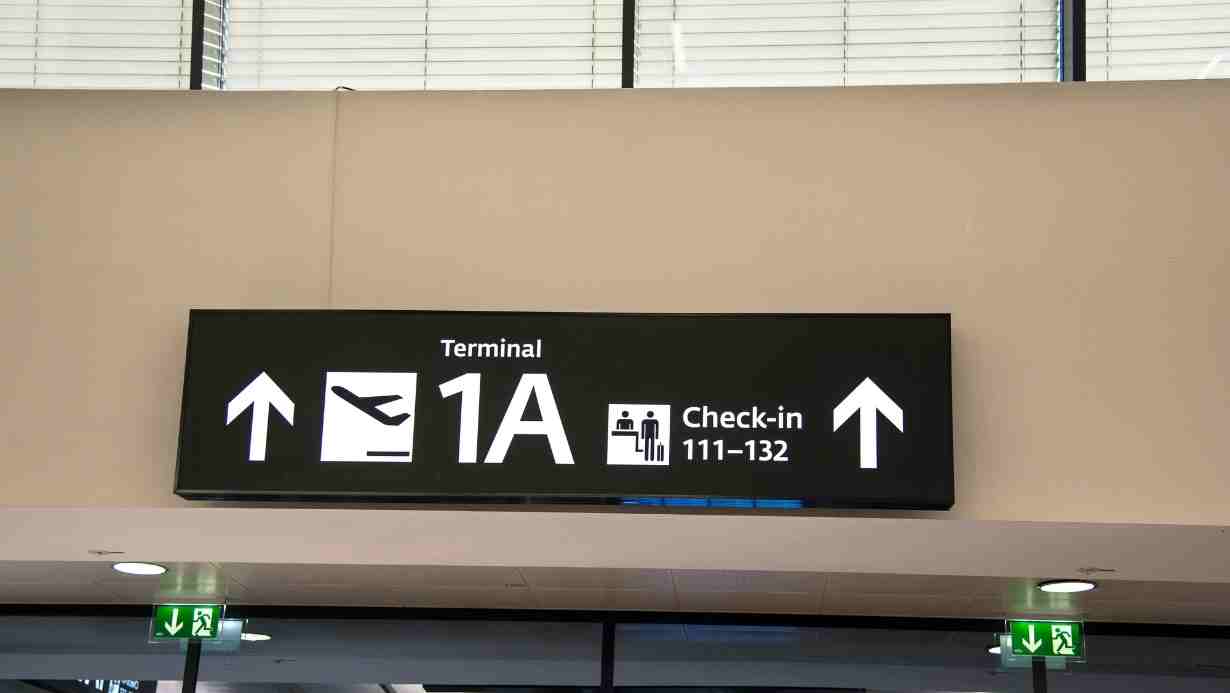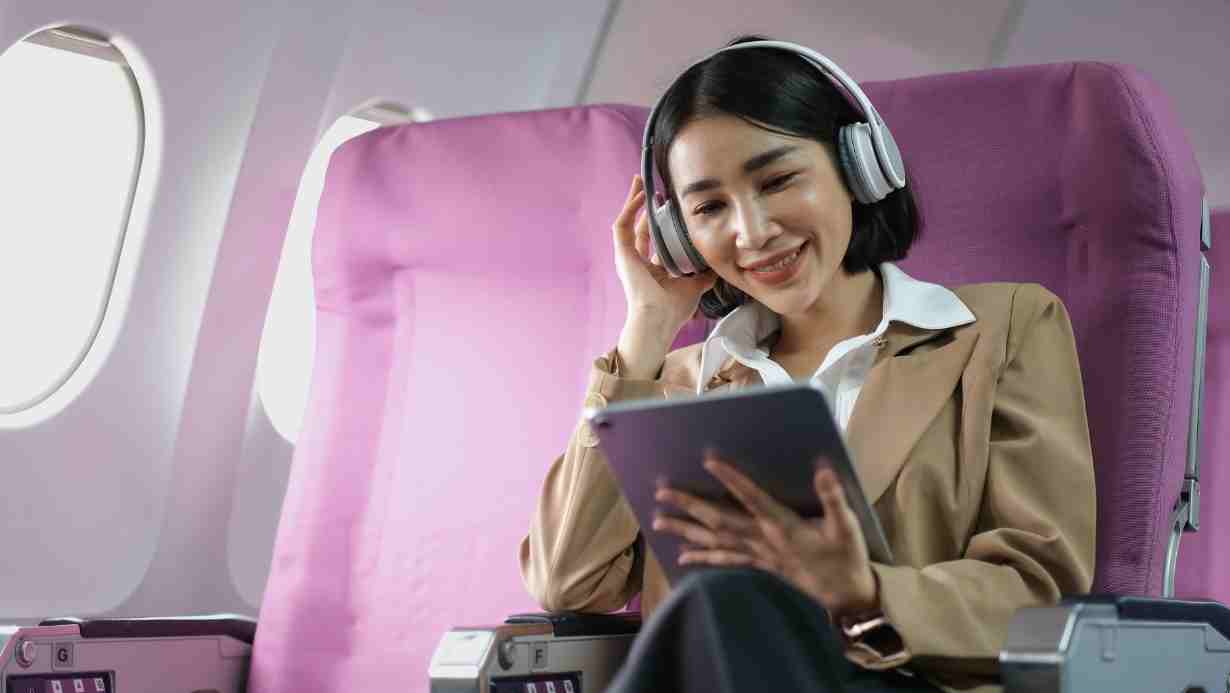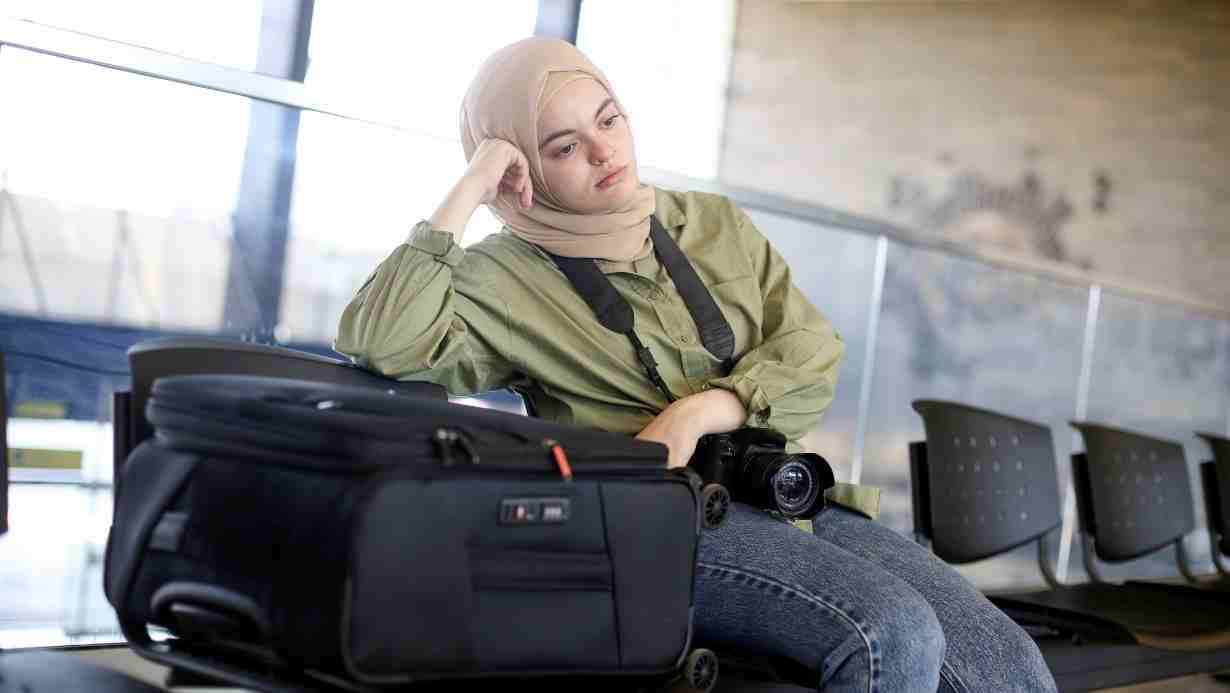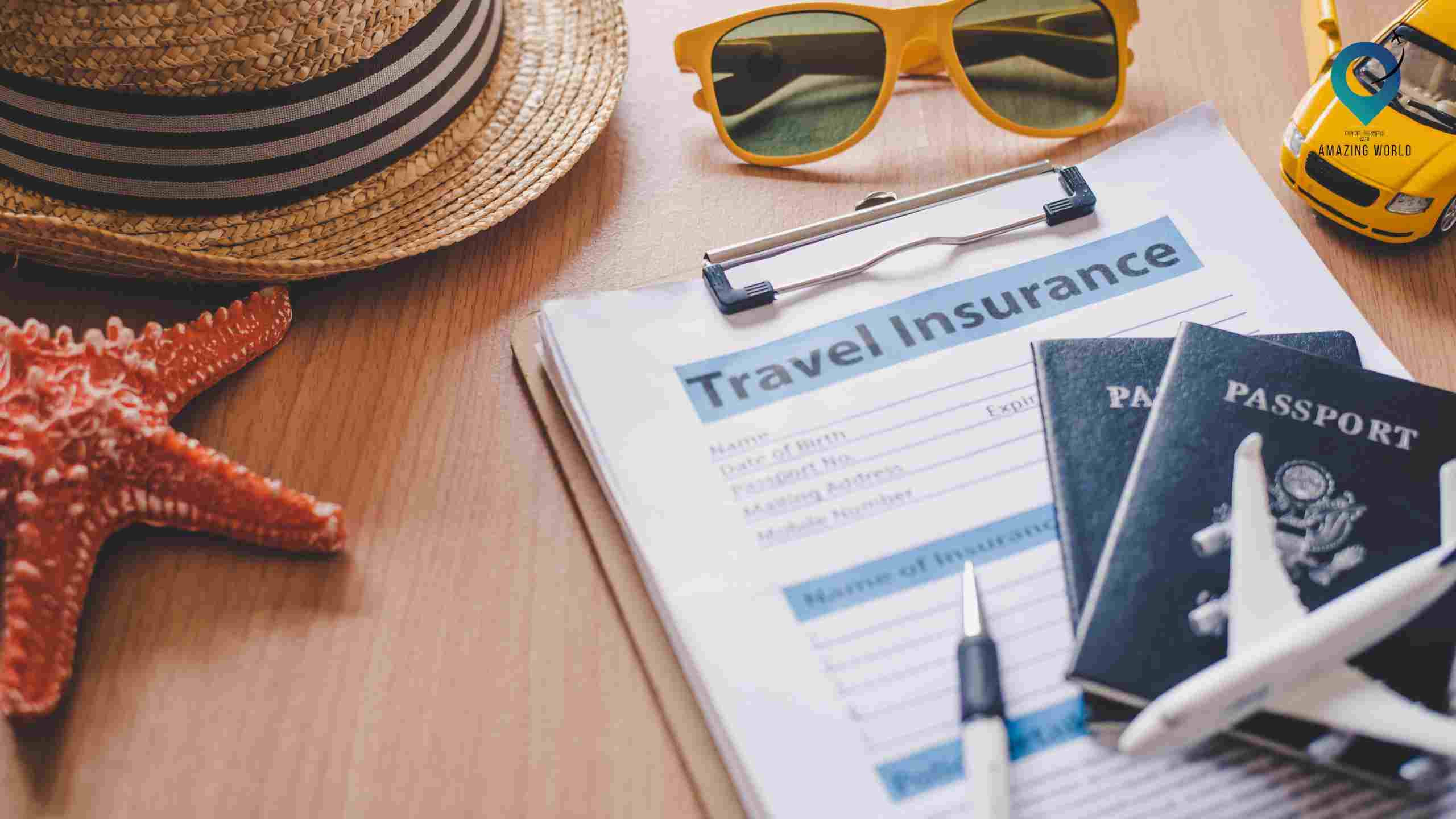Air Travel Tips to Know Before Your Flight
From booking your flight with the right airline to understanding how to stay comfortable during long flights and handling disruptions like a pro, we’ve got you covered.
Plus, we’ll provide essential tips for staying healthy on a plane, traveling with kids and pets, and even reducing your carbon footprint to make your travel experience more environmentally responsible.
Join us on this exploration as we delve into the world of airplane travel, answering your questions, and simplifying the process.
Also, if you are looking best hotels and Homestay deals then we recommend booking your hotels and homestay with priceline.com
Importance of Airplane travel
Airplane travel holds a pivotal role in our modern society, offering a multitude of benefits that extend far beyond just getting from point A to point B. Its significance can be observed on both personal and global scales, making it an essential mode of transportation in today’s interconnected world.
First and foremost, airplane travel has revolutionized the way we experience the world. It has made it possible for people to explore distant lands, connect with loved ones across continents, and engage in cultural exchanges that were once unimaginable. It has opened doors to opportunities for adventure, learning, and personal growth, allowing individuals to broaden their horizons and gain a deeper appreciation for the diversity of our planet.
On a global scale, airplane travel plays a vital role in driving economies and fostering international relations. It facilitates the movement of goods and services, spurring trade and economic growth. The aviation industry itself employs millions of people worldwide, contributing significantly to job creation and economic stability. Furthermore, by fostering international tourism, it supports local economies and helps preserve cultural heritage.
Moreover, airplane travel has played a critical role in times of emergencies and crises. During natural disasters or humanitarian crises, airplanes are often the quickest and most effective means of delivering aid and relief to affected areas. They enable rapid response and support, ultimately saving lives and mitigating the impact of disasters.
In an era of increasing connectivity, airplane travel has become a cornerstone of diplomacy and international cooperation. It allows leaders, diplomats, and delegates to engage in face-to-face discussions and negotiations, fostering collaboration and understanding among nations. The ability to traverse long distances swiftly has played a significant role in conflict resolution and peace-building efforts.
Lastly, the importance of airplane travel extends to the field of scientific research and innovation. It enables scientists to conduct experiments and observations in various parts of the world, advancing our understanding of the planet, climate, and the universe. Without the capabilities of airplane travel, many groundbreaking discoveries and advancements in science would remain unattainable.
Preparing for a smooth flight
Booking Your Flight
Booking a flight is the crucial first step in your air travel journey, and making informed decisions in this phase can significantly impact your overall experience. Here, we’ll delve into the details of booking your flight, covering essential aspects such as choosing the right airline, determining the best time to book your tickets, and selecting the ideal seat.
Choosing the Right Airline
Selecting the right airline is not just about finding the cheapest fare; it’s about aligning your preferences and needs with the airline’s offerings. Here’s what to consider:
- Reputation and Reviews: Research the airline’s reputation by reading reviews from fellow travelers. This will give you insights into their service quality, punctuality, and overall customer satisfaction.
- Amenities: Different airlines offer varying amenities. Some provide complimentary meals and entertainment, while others charge for these services. Consider what’s important to you, whether it’s extra legroom, Wi-Fi, or in-flight entertainment.
- Baggage Policies: Review the airline’s baggage policies to avoid unexpected fees. Some airlines allow a certain amount of checked baggage for free, while others charge for all checked bags.
- Seat Comfort: Consider the seat pitch and width. If you’re tall, you might prefer airlines that offer more legroom. Also, check if the airline offers lie-flat seats for long-haul flights.
- Frequent Flyer Programs: If you’re a frequent traveler, it’s worth looking into the airline’s frequent flyer program. Accumulating miles can lead to free flights, upgrades, and other perks.
Best Time to Book Tickets
Timing is crucial when it comes to booking flight tickets, as it can affect both the availability and price. Here are some key factors to keep in mind:
- Advance Booking: Generally, booking your tickets well in advance can save you money. Airlines often offer discounts for early bookings, so plan your trip and secure your tickets ahead of time.
- Seasonal Variations: Airfare can fluctuate significantly depending on the time of year. High-demand seasons, like summer and major holidays, often result in higher prices. Try to book during the airline’s off-peak season for potential savings.
- Weekday vs. Weekend: Prices may vary depending on the day of the week you book. Generally, it’s advised to book tickets on weekdays rather than weekends, as prices may be lower.
- Flexible Dates: If your travel dates are flexible, use fare comparison tools to find the cheapest days to fly. Sometimes, shifting your travel plans by a day or two can lead to substantial savings.
Selecting the Right Seat
The seat you choose on the plane can significantly impact your comfort during the flight. Here’s what to consider when selecting the ideal seat:
- Window or Aisle: Decide if you prefer a window seat for the view or an aisle seat for easy access to the restroom and more legroom.
- Exit Rows: Exit rows offer extra legroom, but they come with the responsibility of helping in case of an emergency. Make sure you’re physically able to assist if needed.
- Bulkhead Seats: These are the seats behind the dividing wall or curtain. They offer more legroom but may lack under-seat storage.
- Seat Pitch: Seat pitch refers to the distance between seats. If you’re tall, look for airlines that provide more seat pitch for added comfort.
- Online Seat Selection: Many airlines allow you to select your seat during online check-in. Be sure to check in early to secure your preferred seat.
By considering these factors and making informed choices in booking your flight, you can start your air travel journey on the right foot, ensuring a comfortable and enjoyable experience from the very beginning.
Packing for Success
Packing efficiently for your air travel adventure is a skill that can save you time, money, and stress. Whether you’re a seasoned traveler or new to the game, understanding what essential items to bring and how to pack efficiently is crucial for a smooth journey.
Essential Items to Bring
The key to successful packing is bringing the right essentials while avoiding unnecessary items. Here’s a breakdown of what you should consider packing:
- Travel Documents: Your passport, visa, and any required identification documents should top your list. Make photocopies and store them separately for added security.
- Tickets and Itinerary: Ensure you have both physical and digital copies of your flight tickets and a detailed itinerary, including hotel reservations and transportation information.
- Medications: If you have any prescribed medications, bring an adequate supply and carry them in their original containers with proper labels.
- Toiletries: Pack travel-sized toiletries in a clear, resealable bag to comply with airline regulations. This includes essentials like toothpaste, a toothbrush, shampoo, and soap.
- Clothing: Choose versatile clothing suitable for the destination’s climate. Consider layering to adapt to temperature changes. Don’t forget underwear, socks, and sleepwear.
- Electronics: Bring essential electronic devices like your phone, charger, and any adapters or converters needed for your destination.
- Entertainment: Books, e-readers, or other forms of entertainment for the flight can help pass the time.
- Personal Items: Pack your wallet, keys, and any personal items you use daily.
- Travel Pillow and Eye Mask: These can help you get rest during the flight, especially on long journeys.
- Snacks: While airlines provide meals, having some of your favorite snacks can keep hunger at bay.
Packing Tips for Efficiency
Once you’ve identified your essentials, it’s time to pack efficiently to make the most of your luggage space. Here are some tips to help you achieve that:
- Roll Your Clothes: Rolling your clothes rather than folding them can save space and reduce wrinkles. This technique is especially useful for T-shirts, jeans, and casual clothing.
- Use Packing Cubes: Packing cubes are a traveler’s best friend. They keep your clothes organized and separate, making it easier to find what you need without unpacking everything.
- Maximize Space: Utilize every inch of your suitcase. Stuff socks and small items inside your shoes to save space.
- Heavy Items on the Bottom: Place heavier items at the bottom of your suitcase, closer to the wheels. This helps balance the weight and makes the suitcase easier to maneuver.
- Keep Essentials Handy: Pack your travel documents, a change of clothes, and any valuable items in your carry-on bag. This way, you’ll have access to them during the flight and in case your checked luggage is delayed or lost.
- Consider Compression Bags: These bags allow you to squeeze the air out, reducing the volume of bulky items like sweaters or jackets.
- Avoid Overpacking: It’s tempting to bring more than you need, but try to resist. Overpacking can lead to additional baggage fees and make your luggage heavier and harder to manage.
- Know Airline Regulations: Familiarize yourself with your airline’s baggage rules to avoid surprises at the airport. Different airlines have varying weight and size limits for checked and carry-on bags.
Efficient packing not only saves you time and money but also ensures a hassle-free travel experience. By focusing on essentials and using smart packing techniques, you’ll be well-prepared for your journey and can enjoy the adventure with peace of mind.
Airport Navigation
Navigating through an airport can be a complex and sometimes stressful experience, especially if you’re not familiar with the process. To help you have a smooth journey, we’ll break down the key aspects of airport navigation, including arriving on time, understanding security and customs procedures, and effectively moving through the airport.
Arriving on Time
Arriving at the airport with ample time before your flight is crucial for a stress-free start to your journey. Here’s what you need to know:
- Check Your Itinerary: Review your flight details, including the departure time, terminal, and gate. Ensure you have the correct information to avoid any last-minute confusion.
- Early Arrival: Most airlines recommend arriving at the airport at least two hours before a domestic flight and three hours before an international one. These timeframes allow for check-in, security checks, and potential delays.
- Online Check-In: Many airlines offer online check-in, which can save you time at the airport. Take advantage of this service if available.
- Traffic and Transportation: Consider potential traffic and transportation delays when planning your arrival time. It’s better to have extra time to relax at the airport than to rush to catch your flight.
- Parking: If you’re driving to the airport, research parking options. Some airports offer long-term and short-term parking areas, and rates may vary.
Security and Customs Procedures
Security and customs procedures are essential but can be intimidating for travelers. Understanding what to expect can make the process smoother:
- Security Checkpoint: After check-in, you’ll pass through a security checkpoint. Remove your shoes, belts, and items from your pockets and place them in a bin. Laptops and liquids should also be removed for screening. Be prepared to walk through a metal detector or full-body scanner.
- Customs Declaration: If you’re traveling internationally, you’ll need to complete a customs declaration form. This form asks about items you’re bringing into the country, such as gifts, purchases, and prohibited items.
- Passport and Visa: Ensure you have a valid passport and any required visas for your destination. Customs officers will verify your documents during the entry process.
- Know the Rules: Familiarize yourself with the rules and regulations of the country you’re entering. This includes restrictions on items like food, alcohol, and tobacco.
- Prohibited Items: Be aware of what items are prohibited in carry-on and checked baggage. These rules vary by country and airline, so check with your airline and the airport’s guidelines.
Navigating the Airport
Airports can be vast and sometimes confusing, so understanding how to move around efficiently is essential:
- Airport Maps: Most airports provide detailed maps and signs to help you find your way. These maps can be found online or in the airport itself. Familiarize yourself with your departure and arrival terminals.
- Gates and Screens: Monitor departure boards and screens to stay informed about your flight’s status, gate, and boarding times.
- Airlines and Assistance: If you’re unsure about anything, don’t hesitate to ask airport staff or airline employees for assistance. They are usually available to answer questions and guide you.
- Time Management: Use your time wisely. Visit the restroom, grab a snack, and relax in the waiting area. Stay near your gate and be ready to board when your flight is called.
- Security in Transit: If you have a connecting flight, be aware that you may need to go through security again at your connecting airport. Plan for extra time to clear security if necessary.
By arriving on time, understanding security and customs procedures, and efficiently navigating the airport, you’ll set yourself up for a smooth and stress-free travel experience. Being well-prepared and informed ensures that you can focus on the exciting journey ahead rather than getting bogged down by the logistics of the airport.
In-Flight Comfort
Ensuring a comfortable flight is essential for an enjoyable air travel experience. This section will provide you with valuable tips and insights on how to make your time in the air as pleasant as possible. We’ll cover tips for a comfortable flight, entertainment options, and how to manage snacking and hydration effectively.
Tips for a Comfortable Flight
- Dress Comfortably: Wear loose-fitting, breathable clothing and layers that you can easily adjust to suit the cabin temperature.
- Choose the Right Seat: If you have the flexibility, select a seat that suits your preferences. Window seats provide a view and a place to rest your head, while aisle seats offer easy access to the restroom. Exit-row seats typically have more legroom.
- Bring Travel Essentials: Pack a neck pillow, eye mask, and noise-canceling headphones to help you relax and get some rest during the flight.
- Stay Hydrated: The air inside the cabin can be dry, so drink water regularly to prevent dehydration. Avoid excessive alcohol and caffeine, as they can contribute to dehydration.
- Move and Stretch: Get up and walk around the cabin periodically to prevent stiffness. Stretch your legs and do simple exercises in your seat to keep your blood flowing.
- Adjust Your Seat: Experiment with different seat positions. Recline slightly to reduce pressure on your lower back, but be considerate of the passenger behind you.
- Elevate Your Feet: If your feet tend to swell during the flight, consider propping them up with a small bag or cushion.
- Stay Relaxed: Travel can be stressful, so practice relaxation techniques like deep breathing to stay calm and composed.
Entertainment Options
- Preloaded Devices: Bring your tablet or laptop with pre-downloaded movies, TV shows, or e-books. Ensure your devices are fully charged before the flight.
- In-Flight Entertainment: Most airlines offer in-flight entertainment systems with a range of movies, TV shows, music, and games. Check the airline’s website for their available content.
- A Good Book: A captivating book can be a perfect companion for a long flight. Whether it’s a thrilling novel or a non-fiction bestseller, reading can make the time fly by.
- Podcasts and Audiobooks: Download your favorite podcasts or audiobooks before the flight. They can be a great way to pass the time.
- Window Views: If you have a window seat, enjoy the ever-changing view outside. Whether it’s the landscape below or a breathtaking sunset, the window can be a source of entertainment.
Snacking and Hydration
- Pack Snacks: Bring your favorite snacks like nuts, granola bars, or fresh fruit. These can come in handy between meal services.
- In-Flight Meals: Depending on your flight duration, you’ll receive meals and snacks. Be sure to check the airline’s menu in advance to know what to expect.
- Special Meal Requests: If you have dietary restrictions or preferences, consider ordering a special meal when booking your ticket. Airlines often offer options like vegetarian, gluten-free, or kosher meals.
- Stay Hydrated: Drink water throughout the flight to stay hydrated. It’s easy to forget to drink in the dry cabin environment, so make a conscious effort.
- Limit Alcohol and Caffeine: Alcohol and caffeine can lead to dehydration, so consume them in moderation.
By following these tips for a comfortable flight, taking advantage of entertainment options, and managing snacking and hydration, you can ensure that your time in the air is enjoyable and as stress-free as possible. A comfortable flight sets the tone for a pleasant journey and helps you arrive at your destination feeling refreshed and ready to explore.
Dealing with Jet Lag
Jet lag is a common challenge for travelers who cross multiple time zones, disrupting their circadian rhythms and causing discomfort. To help you cope with jet lag, we’ll explore the phenomenon and provide practical tips for minimizing its effects.
Understanding Jet Lag
- What is Jet Lag: Jet lag, also known as desynchronises, is a temporary sleep disorder that occurs when your body’s internal clock is out of sync with the time zone you’re in. This misalignment can result in a range of symptoms, including fatigue, insomnia, irritability, and digestive issues.
- Causes: Jet lag is primarily caused by rapid, long-distance travel that moves you across multiple time zones. This swift change disrupts your body’s internal clock, as it struggles to adapt to the new light and dark cycles at your destination.
- Symptoms: Common symptoms of jet lag include fatigue, daytime sleepiness, difficulty falling asleep at night, early morning awakenings, digestive problems, irritability, and difficulty concentrating.
- Duration: The duration of jet lag varies from person to person and depends on factors like the number of time zones crossed and individual resilience. Typically, it takes several days for your body to fully adjust to the new time zone.
Read In Details– Tips on How to Manage Jet Lag in Kids
Tips for Minimizing Jet Lag
- Gradual Adjustment: Before your trip, gradually adjust your sleep schedule to align with your destination’s time zone. Go to bed and wake up an hour earlier or later each day, depending on the direction of travel.
- Stay Hydrated: Drink plenty of water before, during, and after your flight. Dehydration can worsen the effects of jet lag.
- Limit Alcohol and Caffeine: Both alcohol and caffeine can disrupt your sleep patterns and dehydrate you. Consume them in moderation or avoid them, especially on the day of your flight.
- Sleep on the Plane: If you arrive at your destination during your regular sleep hours, try to sleep on the plane. Use earplugs, an eye mask, and a neck pillow for added comfort.
- Adjust Your Watch: As soon as you board your flight, set your watch or devices to the local time of your destination. This will help you mentally adjust to the new time zone.
- Get Sunlight Exposure: Natural light is a powerful regulator of your body’s internal clock. Spend time outdoors during daylight hours at your destination to help your body adjust.
- Melatonin Supplements: Some travelers find melatonin supplements helpful. Consult with a healthcare professional before using them to determine the appropriate dosage and timing.
- Avoid Heavy Meals: Overeating or consuming heavy meals close to bedtime can disrupt your sleep. Opt for light, easily digestible meals, especially in the evening.
- Stay Active: Engage in light exercise, such as stretching and short walks, upon arrival at your destination. Physical activity can help reset your body’s internal clock.
- Patience and Flexibility: Be patient with yourself and allow for some flexibility in your schedule as your body adapts. Avoid scheduling important meetings or activities immediately after arrival.
- Consider Short Stays: If possible, plan shorter stays at your destination. The shorter your trip, the less time your body has to adjust to a new time zone.
By understanding the nature of jet lag and implementing these tips, you can minimize its effects and make the transition to a new time zone more manageable. While it’s challenging, with patience and preparation, you can enjoy your trip without being overly impacted by jet lag.
Staying Healthy on a Plane
Staying healthy while traveling by plane is essential to ensure you arrive at your destination feeling your best. This section will provide tips for avoiding illness and suggest exercises to maintain your physical well-being during long flights.
Tips for Avoiding Illness
- Hand Hygiene: Wash your hands frequently with soap and water, especially after using the restroom and before eating. Carry hand sanitizer for occasions when washing facilities are not available.
- Mask Usage: In times of contagious illnesses, consider wearing a face mask to reduce the risk of airborne infections. This can be particularly useful during flu or pandemic outbreaks.
- Avoid Touching Your Face: Your hands can transfer germs to your face, so avoid touching your eyes, nose, and mouth to reduce the risk of infection.
- Stay Hydrated: Drink plenty of water to keep your mucous membranes moist, which can help protect against germs. Dehydration can make you more susceptible to illness.
- Seat Selection: Choose a seat away from passengers who appear unwell or are coughing/sneezing. Consider a window seat, as it reduces contact with other passengers and surfaces in the aisle.
- Disinfecting Wipes: Pack disinfecting wipes to clean your armrests, tray table, and other commonly touched surfaces at your seat.
- Keep Air Vents Open: Use the air vent above your seat to create a personal airflow barrier, helping to divert potentially infectious air away from you.
Exercises for Long Flights
- Ankle Rolls: Lift your feet off the ground and rotate your ankles in both directions. This helps improve circulation and reduces the risk of blood clots.
- Leg Lifts: While seated, lift your legs one at a time and hold them in an extended position for a few seconds. Repeat this exercise to keep your leg muscles engaged.
- Seated Forward Bend: Bend forward from your waist while sitting to stretch your back and relieve tension.
- Neck Stretches: Gently tilt your head from side to side and forward and backward to relieve neck tension and prevent stiffness.
- Shoulder Rolls: Roll your shoulders forward and backward to reduce shoulder tension and improve circulation.
- Breathing Exercises: Take slow, deep breaths to calm your body and improve oxygen intake. Inhale deeply through your nose, hold for a few seconds, and exhale slowly through your mouth.
Etiquette and Consideration
Maintaining a courteous and considerate attitude while traveling is not only respectful but also contributes to a more pleasant experience for everyone involved.
Being a Considerate Passenger
- Keep Noise Levels Down: Use headphones to listen to music or watch videos, and adjust the volume so it doesn’t disturb others.
- Recline Your Seat Mindfully: If you choose to recline your seat, do so gradually and consider the person behind you. Avoid reclining during meal times or when the person behind you is using their tray table.
- Respect Armrests: Share armrests with your fellow passengers. Avoid spreading into their space, especially if you’re in the middle seat.
- Personal Hygiene: Ensure you’re well-groomed and use appropriate deodorant. Maintain basic personal hygiene to make the journey more comfortable for everyone.
Respecting Cabin Crew
- Follow Instructions: Listen to and comply with cabin crew instructions promptly. They are responsible for your safety and comfort.
- Avoid Unnecessary Requests: Be mindful of the cabin crew’s workload. If you require assistance, use the call button responsibly.
- Express Gratitude: When the flight concludes, take a moment to thank the cabin crew for their service. A little politeness goes a long way.
Dealing with Delays and Disruptions
Delays and disruptions are an unfortunate part of air travel. How you handle these situations can make a significant difference in your overall experience.
What to Do in Case of Delays
- Stay Informed: Keep an eye on flight status boards and announcements. Sign up for airline alerts to receive real-time updates on your flight.
- Contact the Airline: If you face a significant delay, consider reaching out to the airline’s customer service via phone or social media for assistance and information.
- Backup Plans: Have a contingency plan for delays, such as entertainment, snacks, and necessary medications in your carry-on bag.
Handling Disruptions Like a Pro
- Remain Calm: It’s easy to get frustrated during delays, but maintaining your composure will help you think clearly and make better decisions.
- Rebook Early: If your flight is cancelled, don’t wait too long to rebook. There will likely be other passengers trying to do the same.
- Hotel Accommodations: In the case of significant delays, ask the airline if they provide accommodations or meal vouchers. You may also consider booking a hotel yourself for a more comfortable wait.
By practicing good hygiene, following in-flight exercises, being a considerate passenger, respecting cabin crew, and handling delays and disruptions calmly, you can ensure that your air travel experience remains as pleasant and stress-free as possible, even when faced with challenging situations.
Traveling with Children
Traveling with children can be a rewarding experience, but it requires some planning to keep them comfortable and entertained.
Tips for Flying with Kids
- Plan Ahead: Pack essentials like diapers, wipes, snacks, and toys in your carry-on bag. Be prepared for any delays.
- Seat Selection: Consider booking seats together and bring a car seat for infants and toddlers. Airlines often have family-friendly seating options.
- Entertainment: Bring a variety of entertainment, such as books, coloring books, electronic devices, and headphones to keep your children occupied during the flight.
- Snacks: Pack a selection of your child’s favorite snacks, as in-flight food might not always suit their taste.
- Schedule Flights Wisely: Try to schedule flights during your child’s nap time or bedtime to increase the chances of them sleeping during the journey.
Read In Details– What are some tips for traveling with children?
Traveling with Pets
Flying with pets requires careful planning to ensure their safety and comfort.
Guidelines for Flying with Pets
- Check Airline Policies: Different airlines have varying pet policies, including size and breed restrictions. Research your airline’s guidelines before booking.
- Pet Carrier: Invest in a well-ventilated, secure pet carrier that complies with airline regulations. Ensure your pet is familiar with the carrier before the journey.
- Vet Visit: Visit the veterinarian for a health check and to ensure your pet is up-to-date on vaccinations and has the necessary documentation.
- Food and Water: Limit your pet’s food intake before the flight to prevent motion sickness. Provide water regularly during travel.
- Comfort Items: Bring familiar items like toys, blankets, and a piece of your clothing to comfort your pet during the journey.
Airplane Travel Insurance
Airplane travel insurance can provide peace of mind and financial protection during your journey.
The Importance of Travel Insurance
- Cancellations: Travel insurance can reimburse you if your trip is canceled or delayed due to unforeseen circumstances.
- Medical Emergencies: It covers medical expenses in case of injury or illness during your trip.
- Luggage and Belongings: Travel insurance can reimburse you for lost or damaged luggage and personal belongings.
How to Choose the Right Plan
- Coverage: Determine the coverage you need, including medical, trip cancellation, or baggage loss. Choose a plan that best fits your travel style.
- Price: Compare prices from different insurance providers. Keep in mind that the cheapest plan may not provide adequate coverage.
- Read the Fine Print: Carefully read the policy terms and conditions to understand what is covered and any exclusions.
Environmental Considerations
Travelers can minimize their environmental impact by making conscious choices.
Reducing Your Carbon Footprint
- Choose Direct Flights: Non-stop flights are more fuel-efficient and produce fewer emissions.
- Pack Light: The heavier the plane, the more fuel it consumes. Pack only what you need.
- Use Public Transportation: Opt for public transportation or shared rides when exploring your destination.
Sustainable Travel Options
- Eco-Friendly Accommodations: Choose eco-friendly hotels that prioritize sustainability and environmental responsibility.
- Reduce Plastic Use: Carry a reusable water bottle and avoid single-use plastics during your trip.
- Support Local Communities: Shop locally and support community-based tourism initiatives.
International Travel Tips
When traveling internationally, you need to be prepared for specific considerations.
Passport and Visa Essentials
- Passport Validity: Ensure your passport is valid for at least six months beyond your planned return date.
- Visa Requirements: Research the visa requirements for your destination country. Some countries offer visa-free entry, while others require visas in advance.
Currency and Language Considerations
- Currency Exchange: Familiarize yourself with the local currency and exchange rates. Consider carrying a small amount of local currency for initial expenses.
- Language Skills: Learn a few basic phrases in the local language to facilitate communication. Carry a phrasebook or use translation apps for assistance.
By following these tips and guidelines, you can make your international travel experience more enjoyable, safe, and environmentally conscious. Whether you’re traveling with children, pets, or just for leisure, careful planning and consideration can enhance your journey.
Conclusion
Air travel offers a world of opportunities and adventures, but it’s important to be well-prepared to make the most of your journey. From booking your flight to reaching your destination and considering various aspects of your travel, a smooth and enjoyable experience is within reach.
Booking your flight wisely, choosing the right airline, and understanding the best time to book tickets are crucial steps that set the foundation for your trip. Selecting the ideal seat can significantly impact your comfort throughout the flight. And don’t forget the importance of a well-suited travel insurance plan to provide you with peace of mind during your journey.
Efficient packing ensures you have everything you need without unnecessary clutter. Knowing what essential items to bring and using smart packing tips can make your trip hassle-free. In-flight comfort is equally important, with tips for maintaining your well-being, staying entertained, and managing your snacking and hydration effectively.
Airports can be complex to navigate, but understanding how to arrive on time, go through security and customs procedures, and move efficiently through the airport can help make your experience more enjoyable.
Dealing with jet lag requires some thoughtful strategies, from understanding its causes to tips for minimizing its effects. Staying healthy on a plane is crucial, with tips for avoiding illness and exercises to keep your body in good shape during long flights.
How much did you like Our detailed Airplane Travel Tips: Everything You Need to Know for a Smooth Flight? Review Also, please share these Blogs with your friends on social media.
Recommended

Meet David Hoper, a passionate travel Blog writer with 7+ years of experience in travel content. Through his exemplary storytelling and engaging narratives, he shares his experiences and brings destinations to life. With a keen eye for detail and a love for exploration, he has cultivated a diverse portfolio of travel blogs that inspire and inform readers worldwide.














